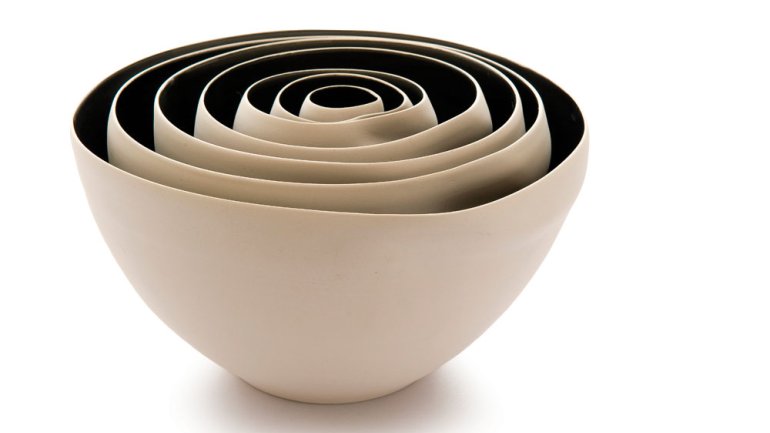Cross-Cultivation in Israel
Cross-Cultivation in Israel
“It was an incredible experience, so dense and deep and complex,” says Akio Takamori, noted clay sculptor and University of Washington professor, talking about his recent two-week visit to Israel under the auspices of the Association of Israel’s Decorative Arts.
“I realized, of course, the intensity of the situation politically, and also, geographically, the isolation,” Takamori says. “One woman said to me, ‘Thank you for coming. It’s very, very important for us.’ Because of that sense of displacement, or misplacement, when they see someone from outside the country come in, it makes them feel connected.”
Fostering the development of Israel’s contemporary craft field by exposing its makers to “the best of what’s going on in the craft world” is the mission of AIDA, says Doug Anderson of Palm Beach, Florida. In 2003 he and his wife, Dale, a prominent craft collector and advocate, joined with another couple, philanthropists Charles and Andrea Bronfman, to create the nonprofit organization. Tragically, Mrs. Bronfman, a passionate champion of Jewish causes, was struck and killed by a car in 2006. To carry on their work on behalf of the artists, a board was established to expand the reach and impact of AIDA.
Today the association thrives, thanks to a vigorous support network of artists, collectors, and institutions, and expert advisors such as curators Davira Taragin and Jane Adlin.
At first, AIDA concentrated on introducing Israeli artists to the U.S. market by bringing them and their work to high-profile retail events such as SOFA Chicago, the Philadelphia Museum of Art Craft Show and CraftBoston. Lately, the focus has shifted to education and cultural exchange. Through AIDA, distinguished American makers, teachers, and museum curators visit Israel to meet and interact with their counterparts. Israelis, meanwhile, get scholarships to study at top U.S. craft centers such as Pilchuck Glass School, Penland School of Crafts, Haystack Mountain School of Crafts, Watershed Center for the Ceramic Arts, and the Studio at the Corning Museum of Glass.
By putting people together, Anderson says, “we give the unexpected a chance to happen.”
The main conduit for all of this activity is Aviva Ben-Sira, AIDA’s Tel Aviv-based director, who personally guides visitors to artists’ studios, must-see museums, and important schools such as Bezalel Academy of Arts and Design, Shenkar College of Engineering and Design, and Tel Hai College. Her whirlwind insider’s tour – wittily called “Tel-Aviva” – has become a hot ticket stateside, says Anderson. “All the major artists want to go to Israel, do workshops, and spend a week or two with Aviva. She’s become a hero.”
Few know Israel’s craft scene like Ben-Sira, who for 16 years ran the gift shop at the Eretz Israel Museum, an important venue in a country where few galleries show handmade objects. “We have a large community of ceramicists, jewelers, fiber people,” she says. “But we are a young movement, so there is still much to do. And at this point, AIDA helps a lot. The people involved are doing all these things out of love, without any [self-]interest, just to help build appreciation for the work of all these artists.”
Glass art, for example, can use the boost, observes Amy Schwartz, director of the Corning Museum’s state-of-the-art studio, where a scholarship program set up by Andrea Bronf-man’s children enables Israeli artists to learn new techniques and use a facility that’s better-equipped than anything they have, she says. “It really expands their world. Through AIDA, they’re looking at the best and connecting with the best.”
Last year AIDA brought Schwartz to Israel, along with Haystack director (and ACC trustee) Stuart Kestenbaum. “What struck me, as a visitor, was the intensity,” Kestenbaum says. “Everyone had a story – and not a little story. They’re all big stories,” he says. “What they’re doing always seems really charged. They’re dealing with big issues all the time. Emotions are much closer to the surface. Conversations you have with, say, a taxi driver, just get heavy right away.”
“The good news is that [AIDA] brings the world together,” Anderson says. “We’re very happy about that.”
Joyce Lovelace is American Craft’s contributing editor.




